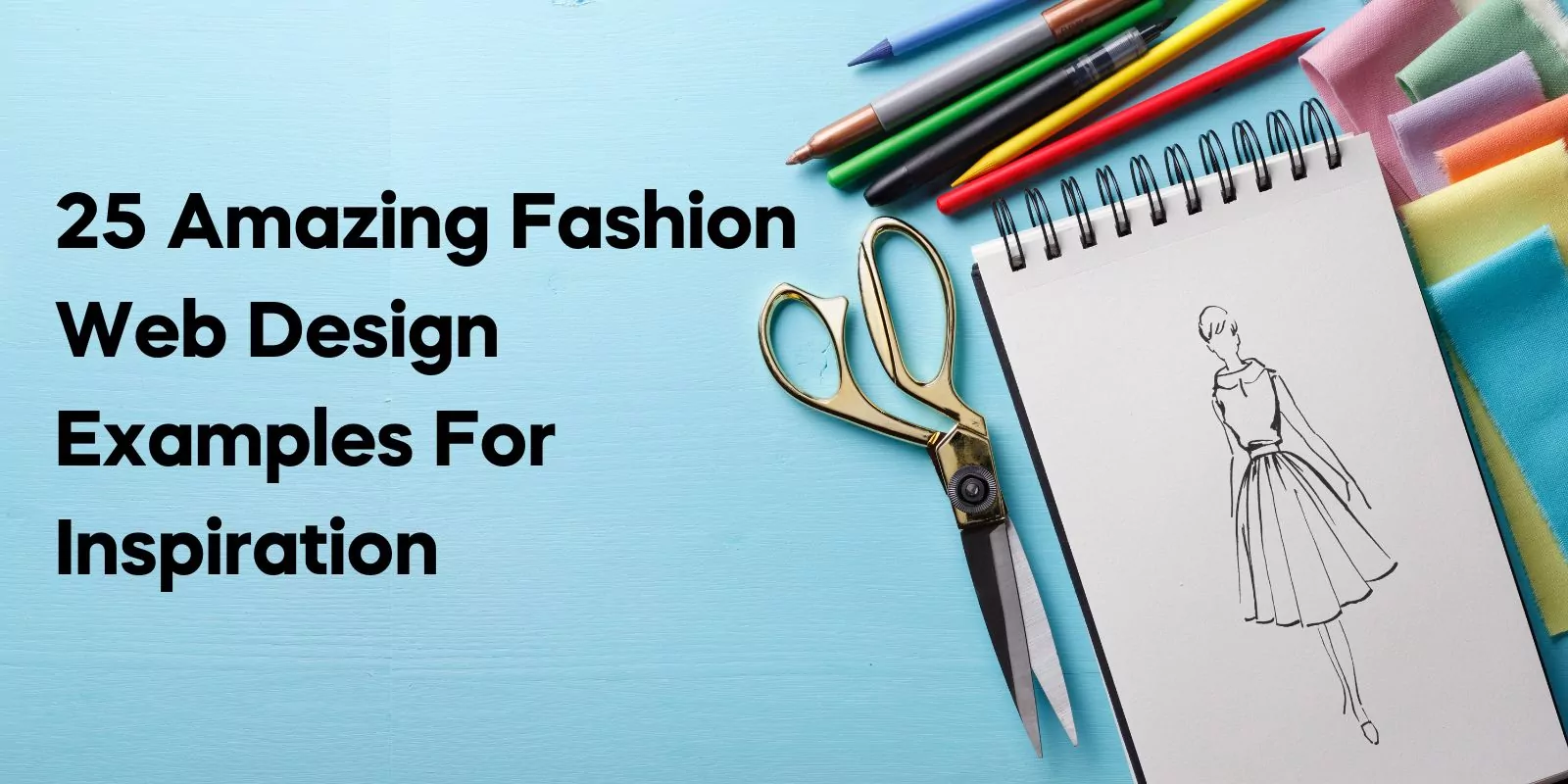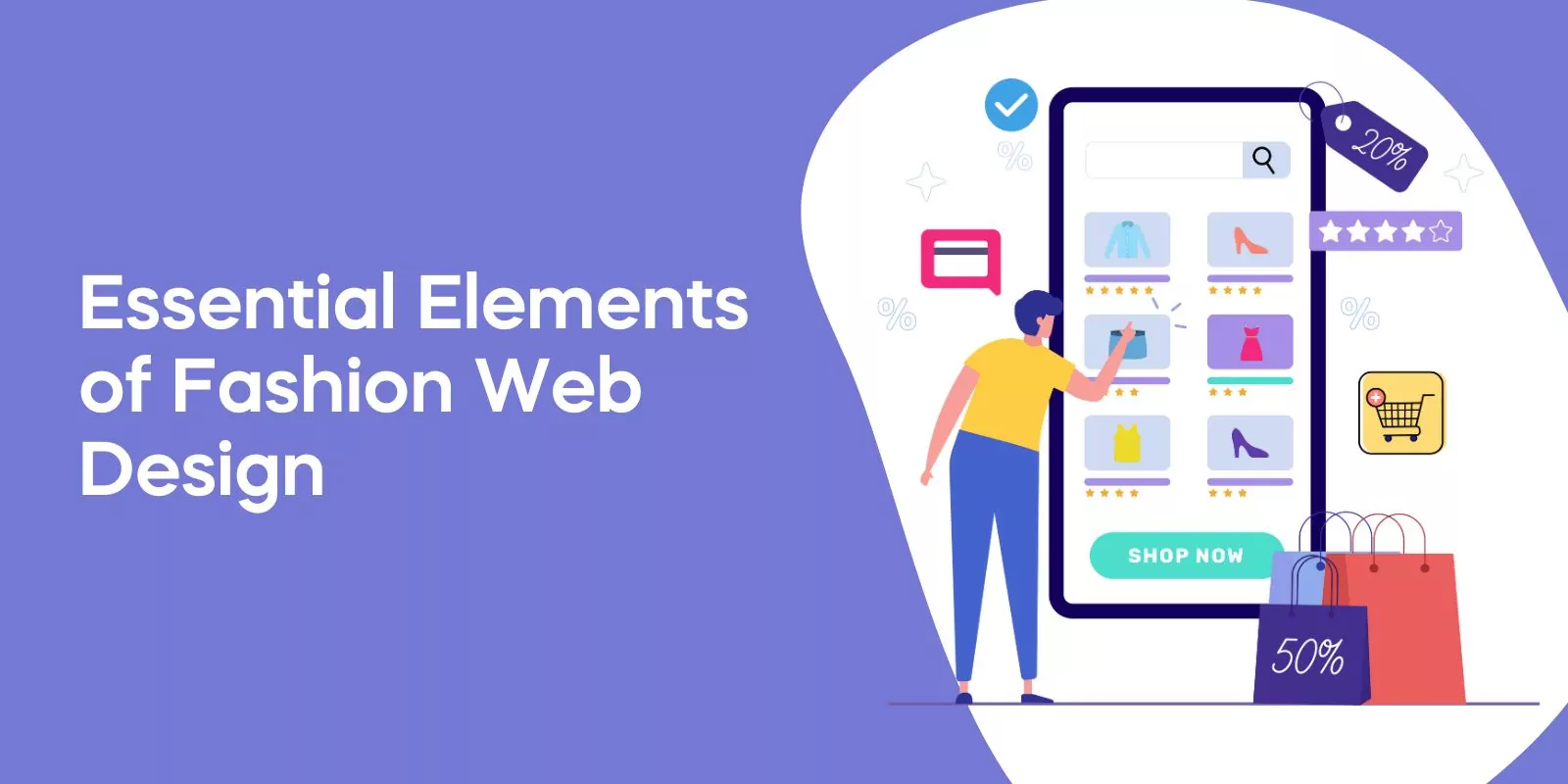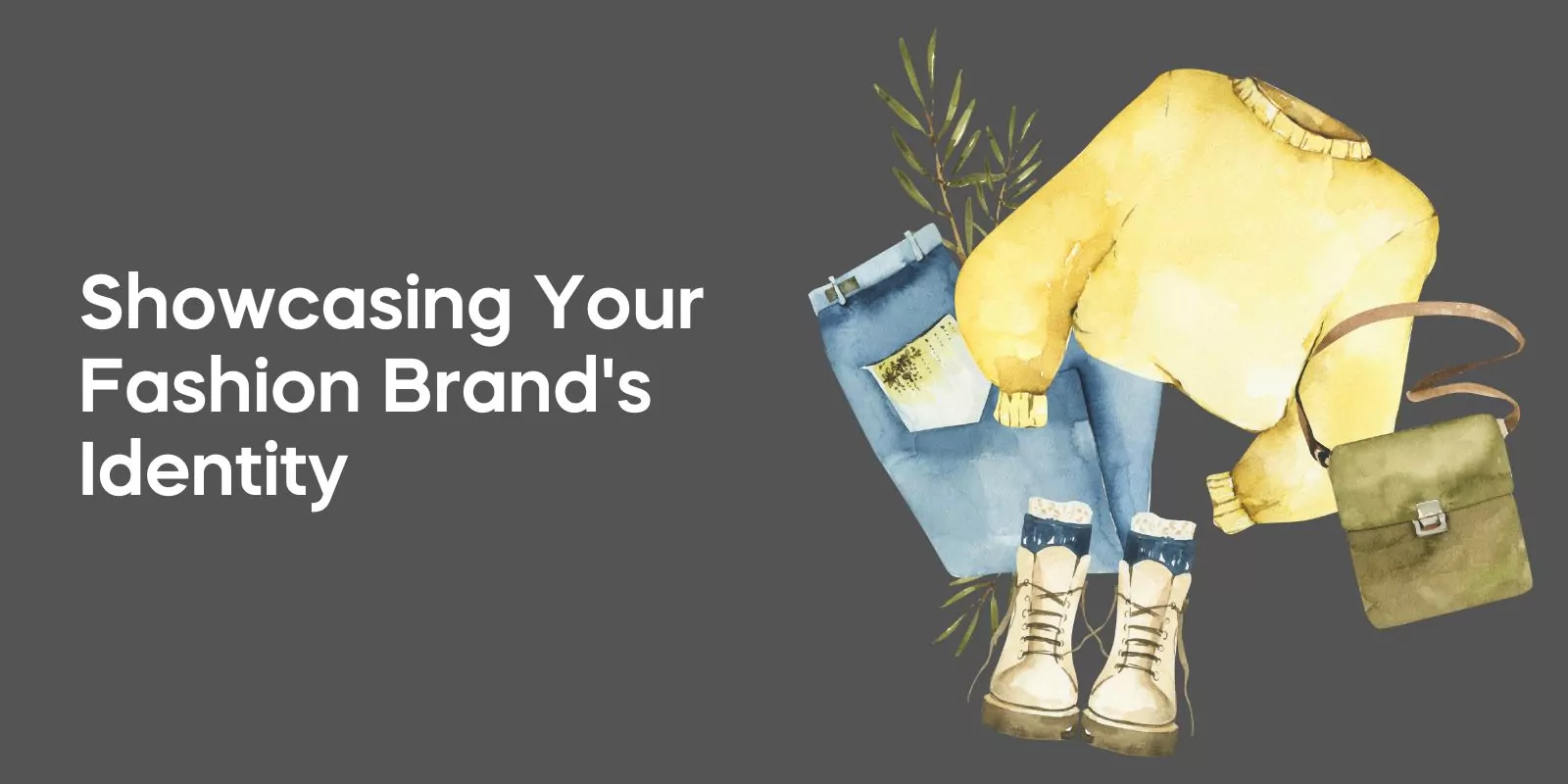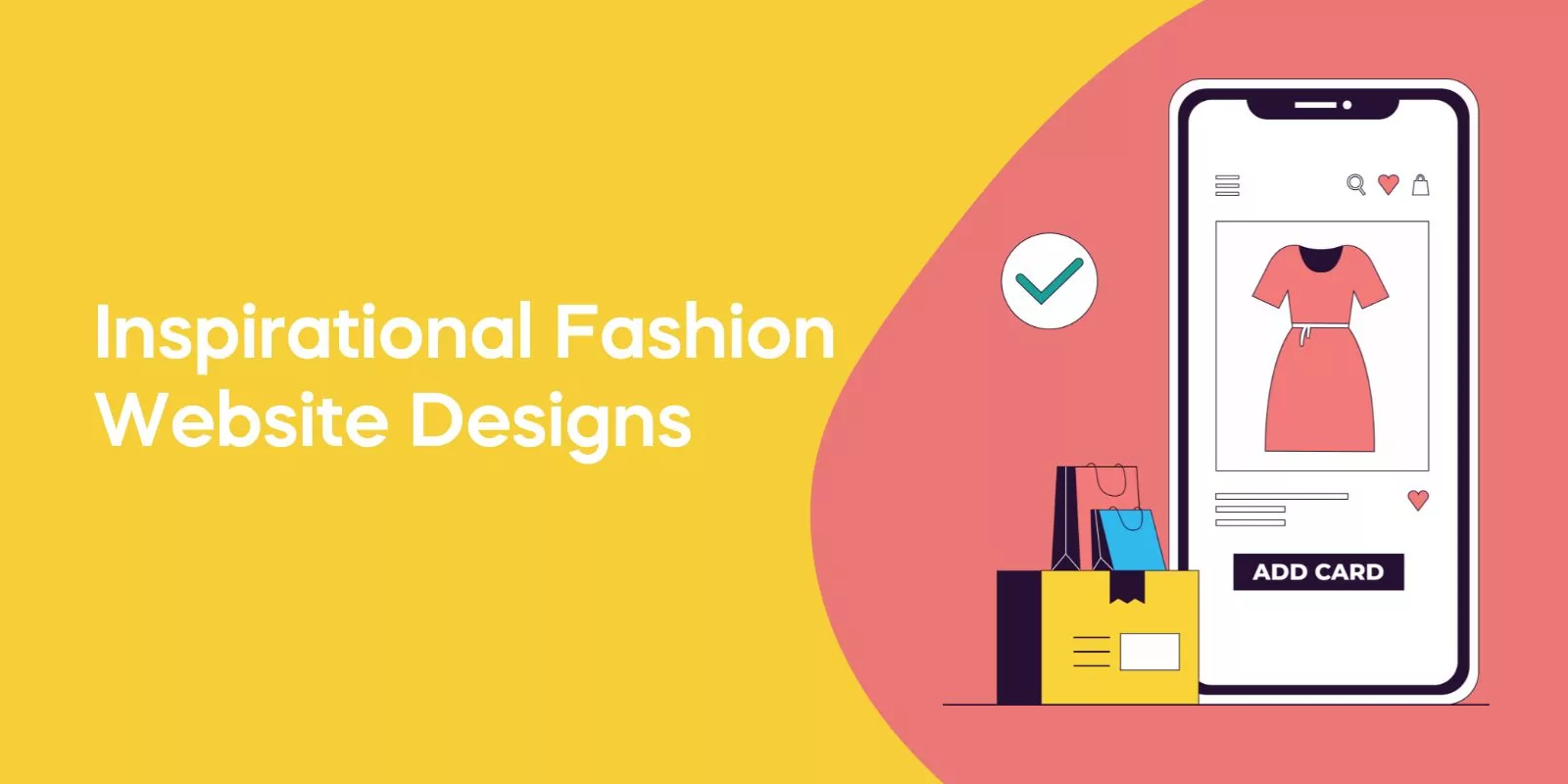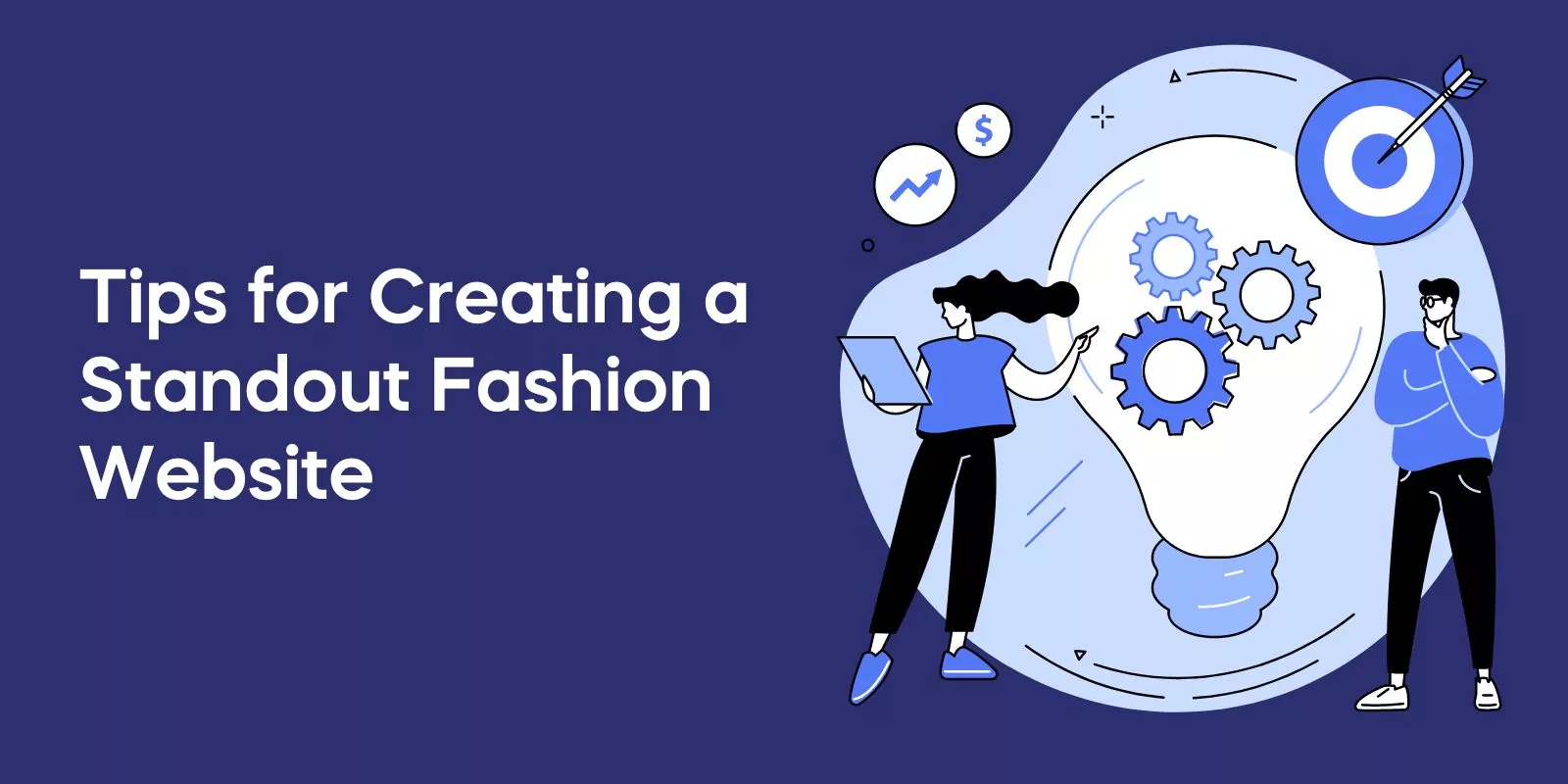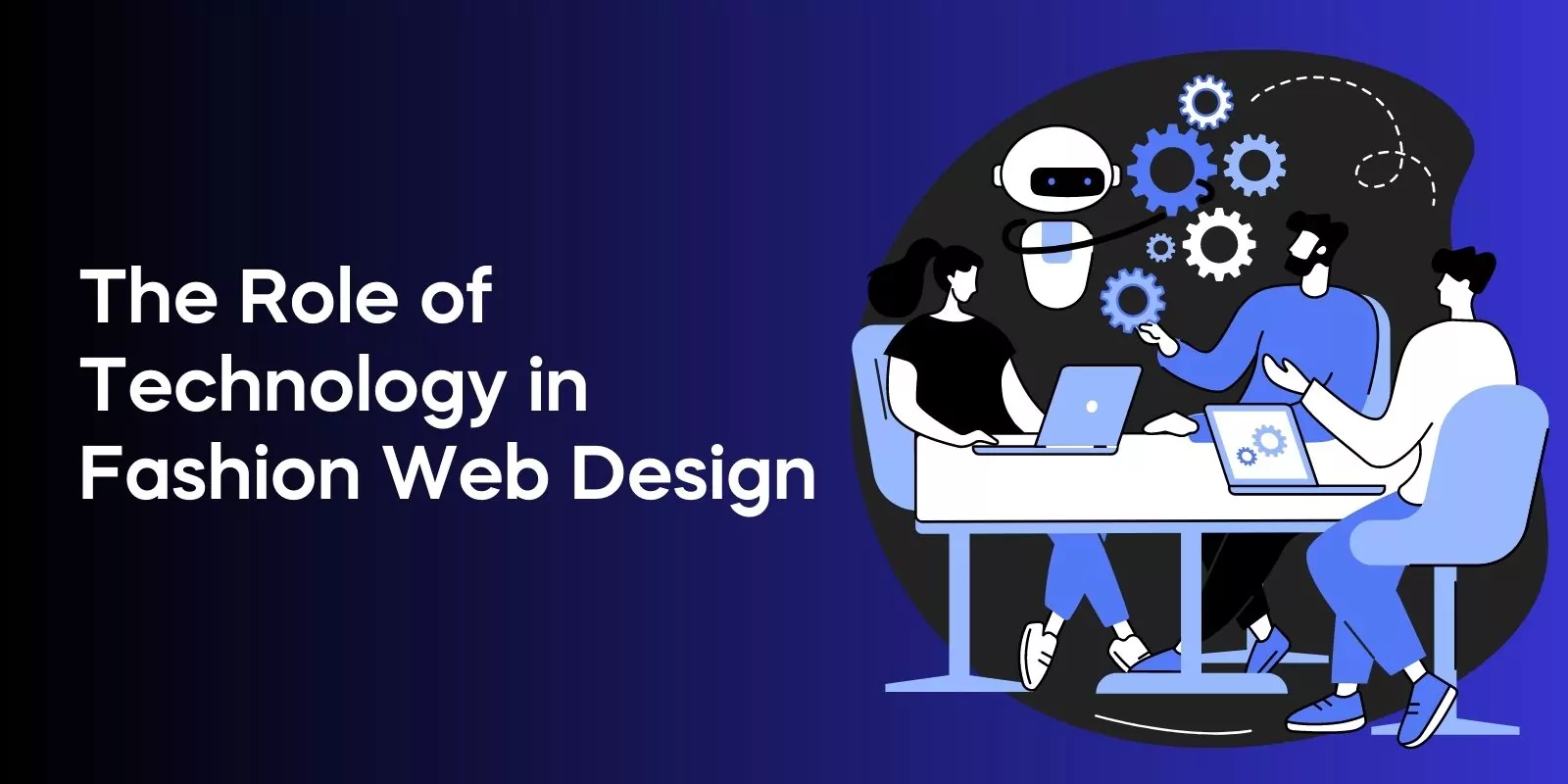Dive into the world of fashion web design, where we explore the essential elements, showcase some of the most inspiring examples, and discuss the role of technology in shaping the future of e-commerce.
Get ready to be inspired and learn how to create a fashion website that not only captures the essence of your brand but also leaves a lasting impression on your visitors.
Essential Elements of Fashion Web Design
In the competitive world of fashion, a website that stands out from the crowd can make all the difference.
To create an effective fashion website, it’s crucial to focus on a few key components: aesthetics, user experience, and intuitive navigation.
After all, your website is the digital storefront of your brand and should showcase your products and brand story in the best possible light.
Assessing your competitors and understanding what makes their websites successful can help you formulate your own plan to differentiate your brand and create a unique online presence.
Utilizing practical themes and templates can also aid in the expansion of your fashion business, while ensuring your website remains on-brand and visually appealing.
In the following subsections, we’ll discuss the importance of visual appeal, user experience, and clear navigation in fashion website design.
These elements, when combined effectively, can create an engaging and memorable online experience for your customers.
Visual Appeal
The adage “A picture is worth a thousand words” holds particularly true in the world of fashion.
High-quality visuals, including product images, videos, and animations, play a significant role in creating memorable and engaging design examples for fashion websites.
Focusing on elements that correspond to your brand, such as colors and typography, can help create a cohesive and visually appealing design.
Videos are also a powerful tool for engaging customers and can be used as design ideas to increase brand awareness among store visitors.
Typography, in particular, is essential in fashion website design, as it allows customers to easily recognize your brand and emphasizes your brand’s message.
When designing a fashion website, it’s crucial to strike the right balance between visual appeal and functionality.
Utilizing negative space, or white space, can help create a clean and minimalist design that guides the visitor’s eye to the focal point of the page.
Similarly, incorporating an Instagram feed or adding hover effects to your website can further enhance the visual appeal and create a more engaging user experience.
User Experience
A seamless user experience is critical in the world of fashion web design.
Factors such as mobile responsiveness, loading speed, and intuitive navigation are crucial for an optimal user experience.
With over 60% of visitors typically accessing websites via mobile devices, having a responsive design can help attract more organic traffic and provide design inspiration for others in the fashion industry.
Additionally, incorporating white space in your design can contribute to an aesthetically pleasing and stylish website that is both simple and user-friendly.
To make the shopping process as smooth as possible, consider adding a quick-view option to your website.
This allows customers to view more items quickly, which can potentially increase sales and enhance their overall experience. Remember, a happy customer is more likely to become a loyal and returning customer.
Clear Navigation
User-friendly navigation plays a key role in helping users navigate your website and consequently, increasing conversions.
An intuitive navigation system is essential for constructing a user-friendly website, ensuring that visitors can easily locate the content they desire.
Fashion web design may include features like product scanning and searching, an aesthetically pleasing layout with a sidebar menu, and a sticky header to facilitate clear navigation.
Having clear navigation can enhance the likelihood of your visitors completing a purchase, resulting in increased sales.

Award-Winning
Sales Funnel & Website Expert
Ready for Revenue – Not Just “Traffic”?
- Websites that Work: Clean, fast, built to convert – no design fluff.
- Funnels that Sell for You: Step-by-step paths that turn clicks into paying customers.
- SEO That Hunts Buyers: Show up exactly when prospects reach for their wallets.
By making it easy for users to find what they are looking for and guiding them through the buying process, you can create a more enjoyable and streamlined shopping experience that sets your website apart from the competition.
Showcasing Your Fashion Brand’s Identity
Your fashion website is more than just a digital storefront; it’s a platform for showcasing your brand’s unique identity and story.
In order to effectively communicate your brand’s values and personality to your audience, it’s essential to focus on three key aspects: brand storytelling, consistent visuals, and unique selling points.
By doing so, you can create an emotional connection with your visitors, differentiate your brand from competitors, and ultimately drive sales and customer loyalty.
In the following subsections, we’ll explore how to incorporate brand storytelling into your web design, maintain consistent visuals throughout your website, and highlight the unique selling points that set your fashion brand apart from the rest.
Brand Storytelling
Brand storytelling is the process of utilizing visual and textual elements to convey your brand’s values, history, and personality to website visitors, with the aim of engaging, converting, and retaining customers.
In order to effectively incorporate your brand’s story into your web design, you can leverage visuals such as logos, colors, and fonts that reflect your brand’s values and personality.
Additionally, you can use text to tell the story of your brand, such as through product descriptions, blog posts, and customer testimonials.
By narrating stories that evoke emotion and form a sense of connection, you can foster an emotional connection with your visitors.
For example, Lacelier utilizes visuals, such as magazines featuring its work, to bolster credibility and enhance its brand storytelling.
Ultimately, effective brand storytelling can help you connect with your target audience and create a lasting impression that sets your brand apart from the competition.
Consistent Visuals
Maintaining consistent visuals across your website is crucial for reinforcing your brand identity and creating a cohesive user experience.
To achieve this, focus on all the elements such as color palette, typography, graphic elements, and layout that accurately reflect your brand’s identity.
For example, you can select fonts and colors that represent your brand’s style and ideology, like Cropp’s modernistic fonts and straightforward design elements.
In addition to the visual elements of your website, it’s also essential to ensure your content is consistent in tone and style.
This includes product descriptions, blog posts, and any other written content on your site. By maintaining a consistent visual and textual identity, you can create a strong brand presence that resonates with your audience and keeps them coming back for more.
Unique Selling Points
Emphasizing your brand’s unique selling points (USPs) is crucial for distinguishing your unique fashion brand from competitors and capturing the attention of your target audience.
Your USPs could include sustainability, craftsmanship, or exceptional customer service, among others. By highlighting these unique aspects, you can showcase what sets your brand apart and create a more memorable and engaging experience for your customers.
To effectively convey your USPs, consider incorporating them into your brand storytelling and visual design. For example, if your brand is focused on sustainability, you could include images and content that showcase your eco-friendly practices and materials.
By weaving your USPs into every aspect of your website, you can create a stronger connection with your audience and enhance the overall appeal of your brand.
Inspirational Fashion Website Designs
Now that we’ve covered the essential elements of fashion web design and explored how to showcase your brand’s identity, let’s take a look at some of the most amazing fashion website designs from various brands.
These examples, handpicked from luxury brands, emerging designers, and e-commerce platforms, offer inspiration and insights for creating your own standout fashion website.
In the following subsections, we’ll showcase examples of luxury fashion websites that exude sophistication and elegance, highlight innovative and creative designs from up-and-coming fashion designers, and feature visually appealing and user-friendly e-commerce fashion websites that drive sales and customer engagement.
Luxury Brands
Luxury fashion websites are known for their superior aesthetics, premium quality visuals, and exclusive approach that reflects the sophistication and elegance of the brand.
Examples of luxury fashion website designs include those of fashion company giants such as Gucci, Porsche, Jimmy Choo, and Prabal Gurung.
These websites often feature immersive visuals, clean layouts, and a consistent design that showcases the brand’s timeless style.
Take Valentino’s website, for instance, which exudes luxury through its exquisite typography, structured images, and carefully crafted design elements.
Another example is Fortress of Inca’s website, which features a laconic design with a light and pleasant color scheme, allowing the brand’s elegant excellence to shine through.
By studying these luxury fashion websites, you can gain inspiration and insight into how to create a sophisticated and exclusive online presence for your own brand, potentially becoming the best fashion website.
Emerging Designers
Emerging designers are essential in providing the fashion industry with fresh ideas and innovative designs. Some examples of emerging designer websites include Cropp, Madina Visconti, and Lasse Pedersen.
These websites showcase their unique design styles and creativity, often incorporating unconventional design elements and layouts that set them apart from more established brands.
Cropp’s website, for example, features a vibrant and innovative design style, reflecting the brand’s youthful and energetic aesthetic.
Madina Visconti’s website, on the other hand, showcases her jewelry designs with a primary focus on the color green and a split-screen layout in the hero scene.
By studying these emerging designer websites, you can gain inspiration for creating a fresh and innovative online presence that captures the essence of your brand and sets you apart from the competition.
E-commerce Platforms
E-commerce platforms such as Magento, Shopify, WooCommerce, OpenCart, Squarespace, and Wix offer a wide range of features and functionalities for fashion web design.
These platforms provide features including product catalogs, payment processing, shipping and returns, customer accounts, and analytics, all of which are essential for a successful online fashion business.
Integrating e-commerce platforms into your fashion web design can help optimize time and resources while offering customers an enhanced shopping experience.
However, it’s crucial to ensure that the platform you choose is secure, reliable, mobile-responsive, and user-friendly in order to provide the best possible experience for your customers.
By choosing the right e-commerce platform for your fashion website, you can create a visually appealing and user-friendly online store that drives sales and customer engagement.
Tips for Creating a Standout Fashion Website
Now that we’ve explored the essential elements of fashion web design and showcased some inspiring examples, let’s discuss some practical tips for creating a standout fashion website.
By incorporating these tips into your web design process, you can create a fashion website that not only captures the essence of your brand but also leaves a lasting impression on your visitors.
In the following subsections, we’ll provide advice on designing an engaging homepage, creating product pages that effectively showcase your products and drive conversions, and integrating social media into your fashion website for increased brand exposure and customer engagement.
Engaging Homepage
The homepage is often the first point of contact for your visitors, making it a highly relevant touchpoint for showcasing your brand and capturing their attention.
An engaging homepage should feature a hero section that includes high-quality visuals that convey your primary message quickly, a text block with a header and description, call-to-action buttons, and your brand’s logo and menu.
This hero section should be aesthetically pleasing and reflect your brand’s aesthetic to make a strong first impression.
In addition to the hero section, consider incorporating other visually appealing elements into your homepage, such as featured products, blog posts, or an Instagram feed.
By creating an engaging and visually appealing homepage, you can capture your visitors’ attention and encourage them to explore your website further.
Product Pages That Convert
Product pages are a critical aspect of your fashion website, as they showcase your products and provide an opportunity to convert visitors into customers.
To create product pages that effectively drive conversions, consider incorporating high-quality images that accurately display your products and provide a detailed view of their features.
Additionally, ensure that your product descriptions are comprehensive and include all relevant information about the product, such as features, advantages, and any special offers or discounts.
For a smooth navigation experience on your product pages, ensure that labels and categories are intuitive and easily understood.
Responsiveness across all devices should also be taken into account, as more than 60% of visitors typically access websites via mobile devices.
By designing product pages that effectively showcase your products and provide an enjoyable shopping experience, you can increase conversions and boost sales.
Social Media Integration
Incorporating social media into your fashion website can be advantageous for augmenting brand visibility and customer interaction.
By integrating social media elements, such as social media icons, share buttons, and social media-inspired design elements, you can enhance brand recognition and engagement.
Social media integration can also help you gain valuable insights into your audience’s preferences and behaviors, allowing you to tailor your marketing strategies and product offerings accordingly.
To make the most of social media integration, ensure that your website is connected to your social media profiles and that any content you share is consistent with your brand’s identity and values.
By doing so, you can create a cohesive online presence that engages your audience and drives traffic to your website.
The Role of Technology in Fashion Web Design
Technology plays a critical role in fashion web design, enabling designers to craft more immersive and interactive experiences for their customers.
Features such as virtual try-ons, AI-powered personalization, and augmented reality have all been made possible by technology, thus enhancing the customer experience and setting your website apart from the competition.
In the following subsections, we’ll explore the impact of technology on modern fashion web design, including trends like virtual try-ons, AI-powered personalization, and augmented reality.
By understanding the potential of these technologies, you can create a fashion website that not only captures the essence of your brand, but also provides an engaging and innovative experience for your customers.
Virtual Try-Ons
Virtual try-ons enable users to virtually try on clothes through a computer or mobile device, enhancing the online shopping experience.
This technology can potentially reduce returns, boost sales, and enhance customer satisfaction.
However, ensuring a realistic virtual try-on experience that accurately reflects the appearance and sensation of the garments can be challenging and requires a substantial amount of data and computing power.
To ensure successful virtual try-ons, focus on accuracy of measurements and comprehensive product descriptions.
Additionally, provide a user-friendly interface and a realistic virtual try-on experience to make the shopping process enjoyable and engaging for your customers.
AI-Powered Personalization
AI-powered personalization utilizes artificial intelligence to analyze customer data and behavior in order to generate a personalized user experience on a fashion website.
This may include personalized product recommendations, tailored content, and customized marketing messages.
The advantages of AI-powered personalization include heightened customer engagement, enhanced customer satisfaction, and augmented sales.
However, implementing AI-powered personalization can be challenging, as it requires accurate data, substantial costs, and the potential for privacy concerns.
To successfully incorporate AI-powered personalization into your fashion website, ensure that you have access to accurate customer data and invest in the necessary technology and resources to create a truly personalized user experience.
Augmented Reality
Augmented reality (AR) in fashion web design enables customers to experience products in a realistic manner, mainly through virtual try-on and interactive experiences.
AR can boost brand recognition and customer engagement, providing an immersive and innovative experience for shoppers.
Potential applications of AR in fashion web design include virtual try-on, 3D product visualization, and interactive experiences.
Incorporating AR into your fashion web design can facilitate customer engagement, bolster brand recognition, and create a more immersive shopping experience.
However, implementing AR can be challenging, as it requires a significant investment in technology and resources.
By understanding the potential of AR and incorporating it into your fashion website, you can create a cutting-edge and engaging online presence that sets you apart from the competition.
Frequently Asked Questions
How do I create a fashion website?
Creating a fashion website is an achievable goal with the right approach. Begin by choosing a clothing niche, picking a domain name, selecting a platform and signing up for a hosting plan.
From there, install WordPress, configure WooCommerce and add your products before marketing your store to reach your audience. With this process, you can build your fashion website in no time.
What is needed for a fashion website?
For a successful fashion website, you need to choose an ecommerce platform, select a domain name, create essential pages, add important features, optimize checkout process, build your branding strategy, and choose a great theme.
With these steps in place, your business will be well on its way to success.
How much does it cost to have someone design you a clothing website?
The cost of creating a fashion website can vary depending on who you hire for the project. Freelancers may charge between $450 and $4,900 while web design agencies could cost from $3,000 to $100,000 or more.
Ultimately, the best way to determine your budget is to contact potential providers and discuss your specific needs.
What are the key components of fashion web design?
High-quality visuals, an engaging user interface, and a logical layout are essential elements of fashion web design.
Creating a website that is visually appealing and easy to navigate is essential for any fashion brand. It should be designed to reflect the brand’s identity and values, while also providing a great user experience.
How can fashion brands effectively incorporate brand storytelling into their web design?
Fashion brands can successfully use web design to evoke emotion and engage customers by integrating storytelling into their online presence through the use of visuals, text, and user experience.
By strategically placing visuals, text, and UX elements, fashion brands can effectively leverage brand storytelling in their web design to emotionally connect with customers and create a lasting impression.
Conclusion
In conclusion, creating a standout fashion website requires a combination of essential design elements, a strong brand identity, and the integration of innovative technologies.
By focusing on visual appeal, user experience, clear navigation, and showcasing your brand’s unique story and values, you can craft a captivating online presence that resonates with your target audience.
As technology continues to evolve, embracing trends like virtual try-ons, AI-powered personalization, and augmented reality can further enhance the customer experience and set your fashion website apart from the competition.
Remember, a memorable and engaging fashion website is key to capturing the essence of your brand and leaving a lasting impression on your visitors.
